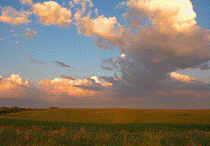North American Prairie Conference
Date of this Version
1989
Abstract
Many grasslands, and in particular the tallgrass prairies of North America, are generally thought to be maintained by periodic fire. Semantic disagreement among researchers, however, threatens to hamper discussion of fire as an ecological force in grassland ecosystems. Some authors emphasize that fires are disturbances (or perturbations) since these fires disrupt or alter ecosystem states, trends, and dynamics (e.g., accumulating nitrogen is volatilized, plant and animal communities change in composition). Other researchers point out that, because these fire-induced disruptions and alterations can maintain the status quo of the ecosystem (e. g., prevent it from becoming woodland), it is the lack of fire rather than fire itself that should be considered a disturbance. We argue that, since both points of view are useful, there is little to be gained by labeling loosely either fire or the lack thereof as a "disturbance" in grassland ecosystems.


Comments
Published in Prairie Pioneers: Ecology, History and Culture: Proceedings of the Eleventh North American Prairie Conference, August 7-11, 1988, Lincoln, Nebraska (Lincoln, NE 1989).